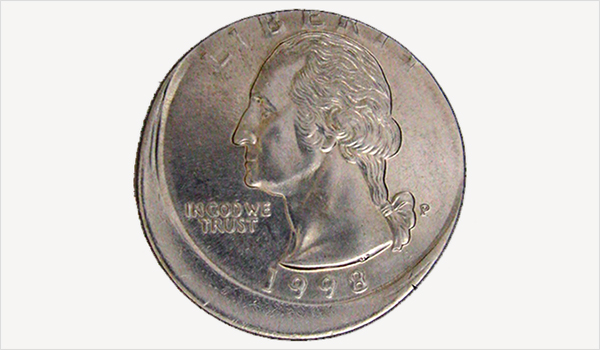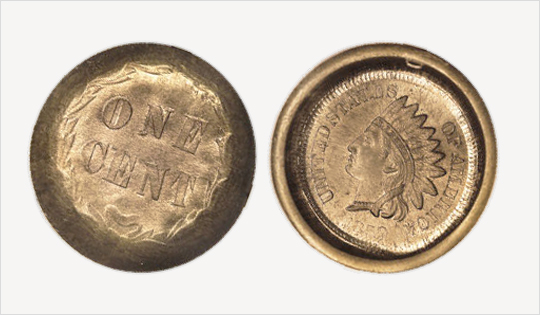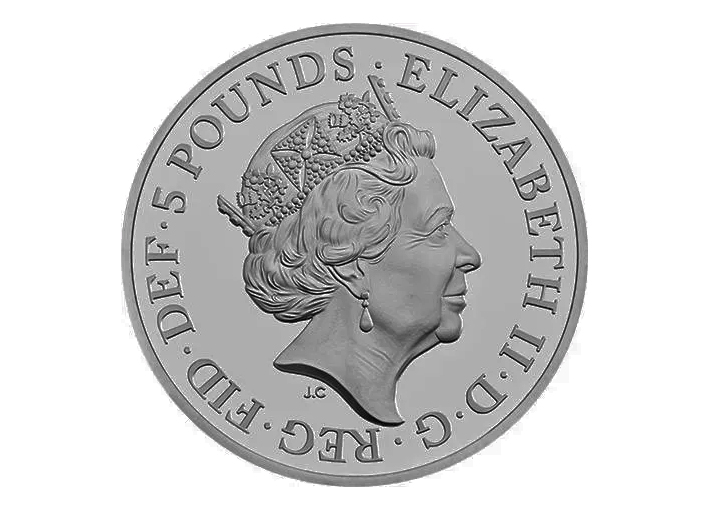
Learn the definition of a coin error and the different types of mint errors that make many collectible coins valuable to numismatists
The value of the coin can be influenced by its quality or condition. Imperfections that make the coin lose its eye appeal cause the decrease in coin value. However, there may be coin imperfections that can increase the price of your collectible coin. These are coin errors.
Error coins are also called striking errors or mint errors. These flaws occur in the mint during the process of making the coins – from preparing the metal for the planchets or coin blanks to striking the design using the metal stamping tool called coin dies.
Minting defects are very rare especially with the technology of modern coinage. Coins with flaws too, are not supposed to be issued for circulation and are instead recycled.
Because of this, error coins are very valuable to coin collectors. In fact, coin error collectables are generally more expensive than other collectible coins without the mint mistakes. There are also numismatic organizations that focus on error coin collecting.
Here are the most common striking and mint errors found in the coin collecting market:
Off center strike

Off-center strikes are the most known mint error coins in numismatics. Off-centering occurs when the coin blank does not land properly on the collar (a metal ring between the upper and lower die of the coin chamber.
It holds the coin blank or planchet in place when the design is pressed on the coin). With the coin improperly landing on the collar, the die only strikes a part of the coin causing the off-center image.
A broadstruck coin may also appear bigger in size. This is when a part of the coin that is not protected by the collar expands upon being pressed by the coin die. Broadstrikes occur in almost the same way the off-center error does. In a broadstruck coin, however, the design may be slightly off-center but no elements such as the lettering, date, and portrait are missing from the coin.
Partial Collar coin

A partial collar coin has a split-level edge more visible from the side view of the coin. In this striking error, the other face (either the obverse or the reverse) of the coin has a larger diameter than the other.
This coin error occurs when the collar or metal ring is improperly positioned between the dies. An incorrectly placed collar would cause the coin to have partial reeding (in the case of reeded coins as shown in the photo below; reeded edge coins are those with rough edges) and partial blank surface.
From the front view, a partial collar can be mistaken to a slightly off-center or a broadstruck coin.
Error coins with double strikes

Double or multiple strike errors happen when the coin fails to eject from the collar.
As a result, the coin is struck more than once by the coin dies and this creates the multiple marks on the coin.
Mated pair coins

Mated pairs are few of the rarest error coins to find. These involve two coin blanks or planchets struck in the coin press at the same time producing different errors to each coin.
Common errors in these mated pairs may include a pair of a brockage coin and capped die coins (both to be explained later in this article).
Brockages

Brockage striking error involves a coin blank or planchet and a normally struck coin. This error occurs when a normal coin sticks to the upper die and strikes a blank coin.
In effect, the blank coin will have a mirror image of the stuck coin depressed or incused on the new coin’s surface.
Capped Dies

Capped die error happens when a struck coin gets stuck on the upper coin die. This coin then becomes the face of the die and will be called a capped die coin. When the next planchet (blank coin) is placed on the collar for striking, the newly struck coin would bear the brockage error (mentioned in the previous number).
If the striking of coins goes on without the stuck coin removed from the upper die, the capped die coin deforms into a shape similar to a bottle cap or a thimble.
Indents

Indents are strike errors that happen when two coin blanks are placed in one collar with the other coin on top not properly placed on the collar. When the upper die strikes, it creates a depression on the coin below shaped similar to the coin blank on top.
This type of coin error is rare when the two planchets involved are for different denominations.
Bonded coins

Bonded coins occur when the machine that supplies blank coins to the coin press jams or malfunctions. The struck coins will not be correctly ejected from the collar until more coins pile up and are struck by the die together.
These coins would eventually bond because of the strong pressure applied in striking.
Wrong Metal or Wrong Planchet Errors

Wrong planchet or wrong metal coin errors happen when a coin blank for a denomination is fed to a coining press for another denomination.
An example is when a planchet or blank for a nickel is placed into the coin chamber for dimes. The coin chamber is where the coins are being processed.
Mules
A mule is a coin struck with obverse and reverse (the sides of the coin also known as the heads and tails respectively) designs not meant to be together in one coin. A very common example is a coin with obverse images on both sides of the coin. Another concrete example is when a 1943 Lincoln cent will have a reverse image of a 2001 Lincoln cent.
Not all mules are mint error coins. Here are types of muling in numismatics:
a. Intentional mule – a mule which is intently made; may be for commemorative coins and other collectible coins
b. Emergency mule – a type of mule created out of need. A specific occurrence of this was in 1978 during a coin die shortage. The left-over reverse dies of the 1795 Heraldic Eagle coin were used on 1798 Small Eagle coins.
c. Error Mule – when mules are created accidentally
Weak strike Error
Weak strike is a coin error that occurs when the coin dies are just being set up and adjusted before the actual coin stamping starts.
At this point, the pressure applied to the coin press is not high enough producing weak strikes on the coin. As a result, the coin design is hardly visible. Weak strike error coins are also called die trials or die adjustment strikes.
Transitional error coin
Transitional error happens when coin blanks (with different metal composition) from the past year or years are fed to a coin press for a current year.
For example is when a 1943 cent design supposed to be struck in steel are struck in 1942 copper coin blanks.
Double denomination errors
The double denomination mint errors occur when a struck coin is struck again using a pair of dies for a different denomination.
An example is when a US dollar coin is struck for the second time with dies for a Lincoln cent.
Folded over coin error
Folded over strike occurs when the coin blank or planchet accidentally stands vertically on the collar between the upper and lower die. Upon striking, the coin is bent and folded over.
Proof errors
Proof errors are simply those errors on proof coins. These coining mistakes rarely happen on proofs since proof coins in coin collecting are produced through a special process with utmost quality control – the coin blanks are fed by hand and struck twice by chemically treated coin dies.
Because of such rarity, error proof coins are highly in demand by numismatists. Thus, these types are exceptionally valuable coin error collectables.
Clipped planchet error
Clipped planchet mint errors occur during the coin striking process when a part of the coin has been accidentally removed or cut. Clipped planchet can be straight, ragged, or curved clipped planchet.
Lamination mint error in numismatics
Lamination error coins appear like peels or cracks on the coin. These are caused by dirt, gases, and other impurities trapped in the coin blank or planchet.
This error is easily faked by scratching the coin hard; such counterfeited mistakes however are easily noticed by an expert in error coin collecting.










Leave a Reply